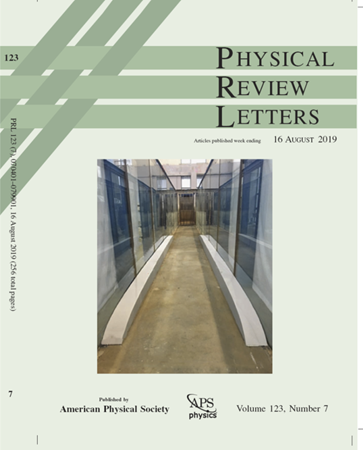铋铁氧体的磁电去耦
IF 9
1区 物理与天体物理
Q1 PHYSICS, MULTIDISCIPLINARY
引用次数: 0
摘要
在多铁性BiFeO3中,磁电耦合是否发生在原子尺度上仍然是一个悬而未决的问题。核固态技术在原子尺度上监测局部场。使用这种方法,我们表明,与我们自己的期望相反,铋铁氧体(BiFeO3或BFO)中的铁电和磁有序在单位胞水平上解耦。在低于、接近和高于磁性n本文章由计算机程序翻译,如有差异,请以英文原文为准。
Magnetoelectric Decoupling in Bismuth Ferrite
It is still an open question if magnetoelectric coupling occurs at the atomic scale in multiferroic BiFeO3. Nuclear solid-state techniques monitor local fields at the atomic scale. Using such an approach, we show that, contrary to our own expectation, ferroelectric and magnetic ordering in bismuth ferrite (BiFeO 3 Published by the American Physical Society 2025
求助全文
通过发布文献求助,成功后即可免费获取论文全文。
去求助
来源期刊

Physical review letters
物理-物理:综合
CiteScore
16.50
自引率
7.00%
发文量
2673
审稿时长
2.2 months
期刊介绍:
Physical review letters(PRL)covers the full range of applied, fundamental, and interdisciplinary physics research topics:
General physics, including statistical and quantum mechanics and quantum information
Gravitation, astrophysics, and cosmology
Elementary particles and fields
Nuclear physics
Atomic, molecular, and optical physics
Nonlinear dynamics, fluid dynamics, and classical optics
Plasma and beam physics
Condensed matter and materials physics
Polymers, soft matter, biological, climate and interdisciplinary physics, including networks
 求助内容:
求助内容: 应助结果提醒方式:
应助结果提醒方式:


